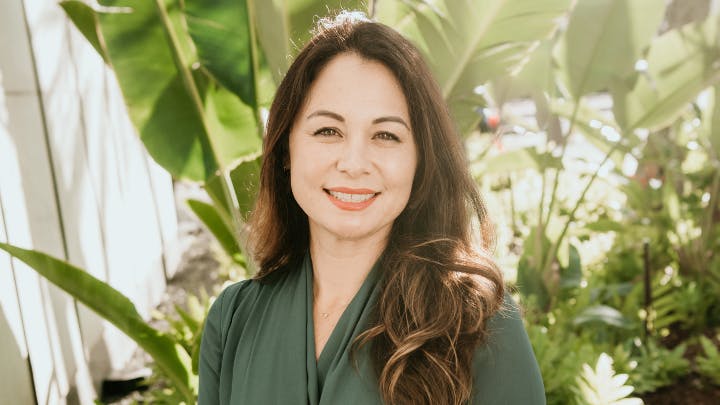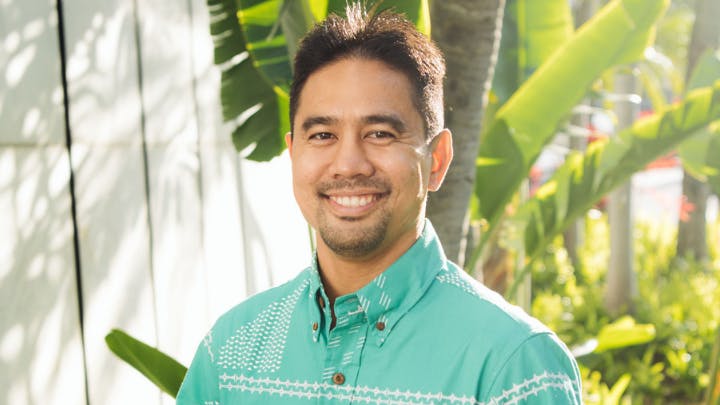Contributed by: Darcie Yukimura
In our latest issue of Taking on Tomorrow, we asked Fellows to share how they prepare for meetings, tips they have learned from their experiences, and how their facilitation skills extend into all aspects of their lives. Here's what Darcie Yukimura, vice president of philanthropy at Kupu had to say.
Knowing that many others, including esteemed colleagues, skillfully manage board rooms, staff, stakeholders, and personal relationships with consistent success, I offer three points on facilitation:
- The community knows best. Our job is to listen and follow.
- Facilitation comes in many forms. We can change the room from any seat.
- Slow down to go fast.

“Sometimes the power and privilege of our positions and drive to execute successful operations can hinder authentic community group facilitation.”
What have you learned from past experiences as a facilitator?
The community knows best. Our job is to listen and follow.
One example of establishing a diverse group of stakeholders was an initiative that looked at the high suicide attempt rates in Kaua‘i. An initial action plan was to increase traditional interventions like a hotline or crisis training. Once we spoke to youth, parents, pastors, school counselors, practitioners, and a wider net of those with direct and indirect experience, the community asked for something completely different. They asked that we focus not on suicide prevention as there were already great organizations doing that work, but instead to focus on increasing resilience skills for young people.
Our initial approach would have been a narrow, redundant misfire. Instead, this community solution was broad, inclusive, and uplifting. As a result, the Kauaʻi Resilience Project, hosted by the Kauaʻi Planning and Action Alliance with support from the Hawaiʻi Community Foundation, has been activating a network of over 30 youth-serving agencies and unlikely allies to build young people’s ability to overcome adversity and successfully navigate life’s challenges so they can lead enriched, fulfilled, and purposeful lives.
Facilitation comes in many forms. We can change the room from any seat.
Another valuable piece of advice provided to me by a mentor is to lead group facilitation by beingat the tablerather thanat the head of the table.Sometimes the power and privilege of our positions and drive to execute successful operations can hinder authentic community group facilitation. By moving from the head to a seat at the table, leadership happens and the participants can be active, fully committed, and engaged in the process.
With this method, the head-of-the-table facilitator is someone from the affected community—someone well recognized and trusted. A facilitator participant supports the process by acknowledging and affirming diverse perspectives, creating space for an open and transparent process, and providing resources, strategic framing, and critical feedback to the other facilitator.
Slow down to go fast.
Years ago, during the Great Recession, I convened a group of funders to address the nonprofit sector. I asked that they come ready to share their funding priorities so that we could coordinate and not duplicate precious resources that supported a fragile ecosystem of agencies. I expected we would share our playbooks and walk out of the meeting knowing precisely what each funder would support over the next year. That is not what happened. The outcome could have been different if we made space to create a shared agenda which would have gained consent from participants and co-ownership of the meeting goals and outcomes.
How do you apply facilitation in your personal life?
Facilitation creates space for effective communication, collaboration, and decision making. Applying these practices in real-life contexts can promote understanding, inclusivity, and positive outcomes in diverse settings. Here are some situations beyond the workplace that can benefit from a facilitation-based approach:
Family Matters: Whether planning a family trip or working on an estate plan, facilitation comes in handy because of the range of diverse opinions, conflicting interests, and dynamics within a family. If you are not the eldest, you will likely need to facilitate from your seat at the table rather than the head of the table. With intergenerational differences in communication and governance, small actions like clarifying the issue can create a shared understanding. You can also gently walk your family through a framework that ensures everyone’s perspectives are considered an agreement.
School Matters: How many times have you had an exchange with a teacher or coach that left you feeling a little charged? Take the opportunity to notice your “blind spot.” You can ask yourself how your experience shapes your view of the situation. Facilitation prompts you to acknowledge your bias and gain objectivity, then you can center on your common goal. Taking the following steps slows down the conversation and draws out the best way forward:
- assuming the best intent from the other party
- engaging in active listening
- asking open-ended questions
- taking the time to identify pain points and opportunities
Brent Kakesako, Omidyar Fellow and executive director of the Hawai‘i Alliance for Community-Based Economic Development shares his facilitation process and how he prepares for facilitating a group.
